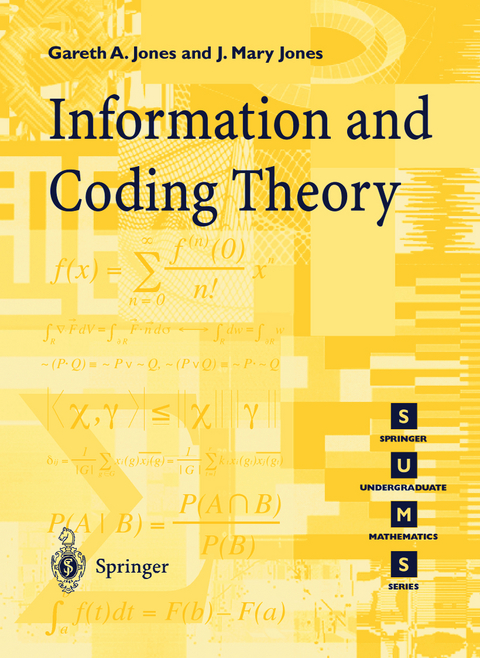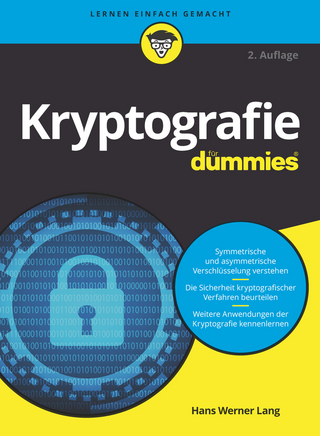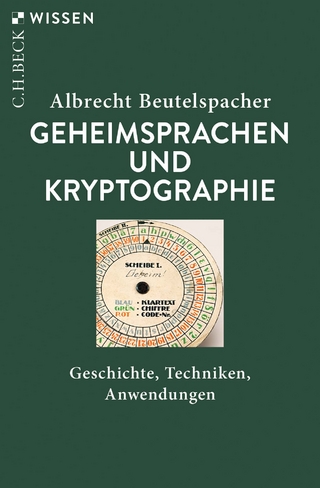
Information and Coding Theory
Springer London Ltd (Verlag)
978-1-85233-622-6 (ISBN)
As this Preface is being written, the twentieth century is coming to an end. Historians may perhaps come to refer to it as the century of information, just as its predecessor is associated with the process of industrialisation. Successive technological developments such as the telephone, radio, television, computers and the Internet have had profound effects on the way we live. We can see pic tures of the surface of Mars or the early shape of the Universe. The contents of a whole shelf-load of library books can be compressed onto an almost weight less piece of plastic. Billions of people can watch the same football match, or can keep in instant touch with friends around the world without leaving home. In short, massive amounts of information can now be stored, transmitted and processed, with surprising speed, accuracy and economy. Of course, these developments do not happen without some theoretical ba sis, and as is so often the case, much of this is provided by mathematics. Many of the first mathematical advances in this area were made in the mid-twentieth century by engineers, often relying on intuition and experience rather than a deep theoretical knowledge to lead them to their discoveries. Soon the math ematicians, delighted to see new applications for their subject, joined in and developed the engineers' practical examples into wide-ranging theories, com plete with definitions, theorems and proofs.
1. Source Coding.- 1.1 Definitions and Examples.- 1.2 Uniquely Decodable Codes.- 1.3 Instantaneous Codes.- 1.4 Constructing Instantaneous Codes.- 1.5 Kraft’s Inequality.- 1.6 McMillan’s Inequality.- 1.7 Comments on Kraft’s and McMillan’s Inequalities.- 1.8 Supplementary Exercises.- 2. Optimal Codes.- 2.1 Optimality.- 2.2 Binary Huffman Codes.- 2.3 Average Word-length of Huffman Codes.- 2.4 Optimality of Binary Huffman Codes.- 2.5 r-ary Huffman Codes.- 2.6 Extensions of Sources.- 2.7 Supplementary Exercises.- 3. Entropy.- 3.1 Information and Entropy.- 3.2 Properties of the Entropy Function.- 3.3 Entropy and Average Word-length.- 3.4 Shannon-Fano Coding.- 3.5 Entropy of Extensions and Products.- 3.6 Shannon’s First Theorem.- 3.7 An Example of Shannon’s First Theorem.- 3.8 Supplementary Exercises.- 4. Information Channels.- 4.1 Notation and Definitions.- 4.2 The Binary Symmetric Channel.- 4.3 System Entropies.- 4.4 System Entropies for the Binary Symmetric Channel.- 4.5 Extension of Shannon’s First Theorem to Information Channels.- 4.6 Mutual Information.- 4.7 Mutual Information for the Binary Symmetric Channel.- 4.8 Channel Capacity.- 4.9 Supplementary Exercises.- 5. Using an Unreliable Channel.- 5.1 Decision Rules.- 5.2 An Example of Improved Reliability.- 5.3 Hamming Distance.- 5.4 Statement and Outline Proof of Shannon’s Theorem.- 5.5 The Converse of Shannon’s Theorem.- 5.6 Comments on Shannon’s Theorem.- 5.7 Supplementary Exercises.- 6. Error-correcting Codes.- 6.1 Introductory Concepts.- 6.2 Examples of Codes.- 6.3 Minimum Distance.- 6.4 Hamming’s Sphere-packing Bound.- 6.5 The Gilbert-Varshamov Bound.- 6.6 Hadamard Matrices and Codes.- 6.7 Supplementary Exercises.- 7. Linear Codes.- 7.1 Matrix Description of Linear Codes.- 7.2 Equivalence ofLinear Codes.- 7.3 Minimum Distance of Linear Codes.- 7.4 The Hamming Codes.- 7.5 The Golay Codes.- 7.6 The Standard Array.- 7.7 Syndrome Decoding.- 7.8 Supplementary Exercises.- Suggestions for Further Reading.- Appendix A. Proof of the Sardinas-Patterson Theorem.- Appendix B. The Law of Large Numbers.- Appendix C. Proof of Shannon’s Fundamental Theorem.- Solutions to Exercises.- Index of Symbols and Abbreviations.
| Erscheint lt. Verlag | 26.6.2000 |
|---|---|
| Reihe/Serie | Springer Undergraduate Mathematics Series |
| Zusatzinfo | 5 Illustrations, black and white; XIII, 210 p. 5 illus. |
| Verlagsort | England |
| Sprache | englisch |
| Maße | 155 x 235 mm |
| Themenwelt | Informatik ► Theorie / Studium ► Kryptologie |
| Mathematik / Informatik ► Mathematik ► Angewandte Mathematik | |
| Mathematik / Informatik ► Mathematik ► Wahrscheinlichkeit / Kombinatorik | |
| Naturwissenschaften ► Physik / Astronomie | |
| Technik | |
| ISBN-10 | 1-85233-622-6 / 1852336226 |
| ISBN-13 | 978-1-85233-622-6 / 9781852336226 |
| Zustand | Neuware |
| Haben Sie eine Frage zum Produkt? |
aus dem Bereich


